- Houston Independent School District
- New Education System
New Education System
NES and NES-aligned schools had significantly higher academic growth than non-NES schools on mid-year exams.
Source: Preliminary mid-year NWEA MAP data, January 2024
-
Schools in HISD’s New Education System (NES) receive additional resources and support to dramatically improve academic performance and give students a variety of enriching opportunities.
NES schools:
- Use an innovative staffing model to ensure students receive consistent high-quality instruction. The model also allows teachers to focus on their core work and have better work-life harmony.
- Pay teachers and staff higher salaries and differentiate compensation based on the subject taught as well as rigorous teacher and leader evaluation systems.
- Have a specific instructional program and receive extra resources and support.
- Provide Art of Thinking courses to teach students critical-thinking and problem-solving skills as well as how to assess, evaluate, and effectively use information.
- Provide specialty classes in the areas of fitness, music and fine arts, 21st-century media and technology, and hands-on science. These classes supplement schools’ existing electives and magnet programs and are taught by community consultants with specific knowledge and skills.
- Offer free trips for middle school students to experience new places and cultures.
The NES is the largest and most significant effort to transform K-12 education in the United States. While other districts have tried to improve schools by taking incremental steps—such as adopting a new curriculum or expanding certain programs—the NES involves whole-scale, systemic reform. Launched at underperforming campuses across HISD in the fall of 2023, the NES is designed to dramatically improve academic performance, close achievement gaps, and ensure Houston's students graduate prepared for the modern workplace and world. It is an ambitious effort for our city—and, indeed, the nation—with the potential to remedy decades of ineffective K-12 policies and prove what is possible for America's students.
See the tabs below to learn more about the NES.
Staffing Model
-
Structure
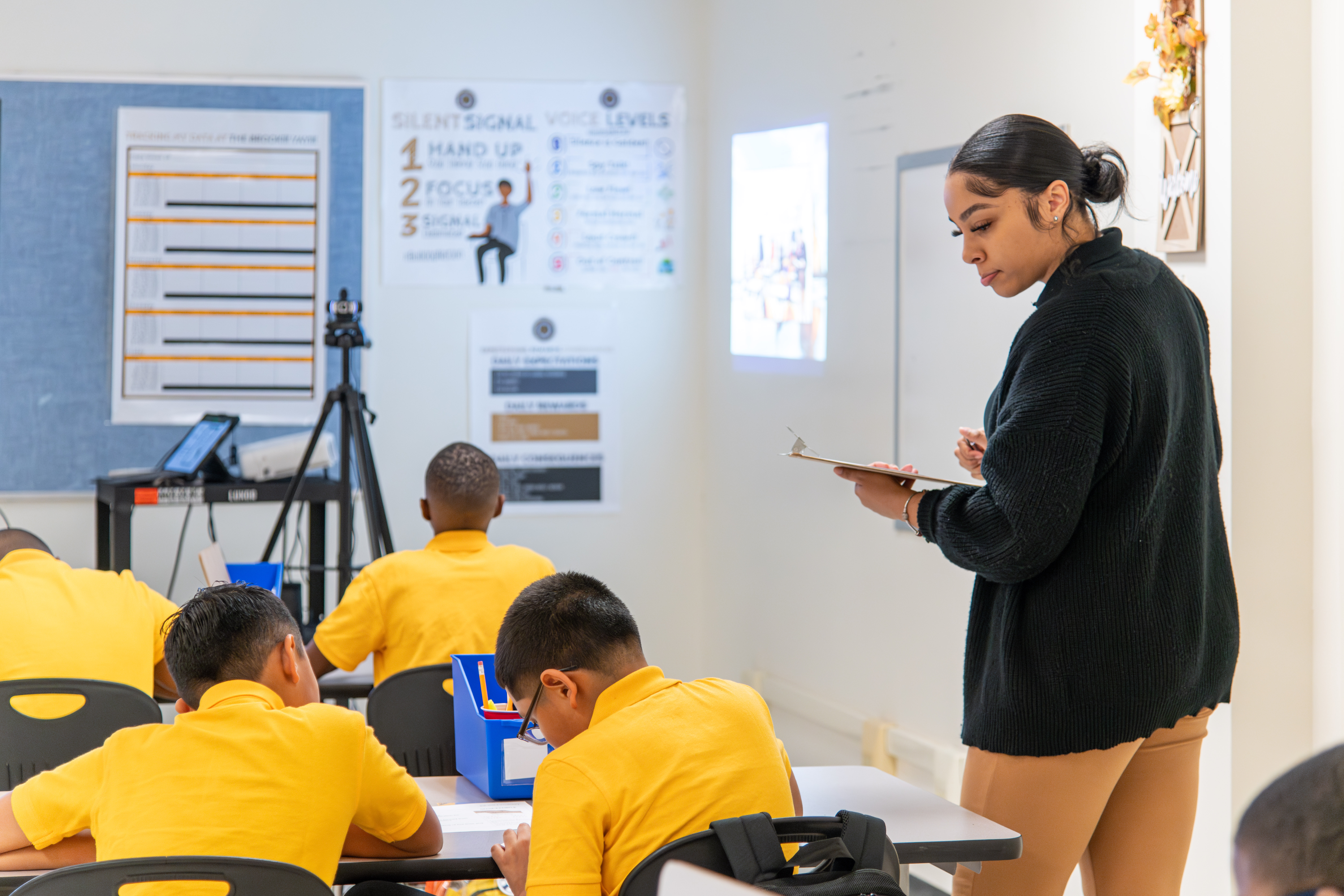
An innovative staffing model is designed to ensure students receive high-quality instruction every day and that teachers can focus on their core work.
Given students' extensive needs, employees at NES campuses earn higher salaries than staff at other HISD schools. Teachers also have a range of resources that promote better work-life harmony and encourage them to stay in the field.
A centralized team creates the daily lessons, which can be customized as necessary, so teachers do not have to spend a great deal of time outside school hours building lessons from scratch. Teachers receive regular coaching from instructional experts and are supported by teacher apprentices and learning coaches.
Apprentices are earning their teacher certification. They work alongside the teacher, learning the instructional model and effective teaching practices; co-teaching; substituting as necessary; and participating in the same training as teachers. Apprentices are eligible for promotion to a teaching position at the campus upon receiving their certification. Learning coaches supervise students’ higher-level independent and partner work and handle a variety of time-consuming tasks such as making copies and completing paperwork.
-
Compensation
In the 2024-2025 school year, there will not be whole-scale reconstitution of any new or exisiting NES campus. Instead, the District will conduct a proficiency screening to determine teachers' eligibility. Individuals who score in the bottom 15 percent on the proficiency screening—which involves mid-year data on quality of instruction as well as student performance and growth—will not be eligible to teach in NES schools.
HISD 2024-2025 Teacher Salaries
Starting Salary*
5-year Salary*
Non-NES schools
$64,000
$67,000
NES—Elementary School
$75,435
$81,435
NES—Middle School
$80,059
$86,059
NES—High School
$82,816
$88,816
*All salaries for non-NES teachers include a planned $2,500 increase for the 2024-2025 academic year. In the NES schools, compensation varies by subject matter taught. Thus, the starting salary listed is an average of the teachers’ starting salaries for a school. The five-year salary is also an average of the teachers’ five-year salaries. More information will be included in the HISD Compensation Manual, which will be published in February.
Instructional Program
-
Instructional Program
One of the first things you will notice at an NES school is a rigorous instructional program directly tied to state standards for what students should know and be able to do at each grade level. Pre-kindergarten through second-grade classrooms use a traditional instructional format.
For students in third through twelfth grade, the format for math and English language arts combines direct instruction with highly differentiated assignments. All English language arts/Spanish language arts and mathematics classes in third through eighth grades are 90 minutes and begin with a Learning Objective for what students should be able to accomplish at the end of the lesson. The first 40 to 45 minutes are focused on instruction using Multiple Response Strategies (MRS) to maximize student engagement.
These research-proven strategies are embedded into the lesson plan to keep students actively reading, writing, discussing, and participating throughout the lesson. MRS also give teachers a way to gauge whether students are grasping the lesson concepts, so teachers can clarify misconceptions and reinforce students’ understanding in real time. See more information on the various MRS in the tab below.
While teachers teach, principals and assistant principals visit classrooms and observe instruction as part of the daily routine. Administrators provide coaching and instructional support. This regular feedback helps teachers continuously refine their craft with immediate adjustments that positively impact student learning. Coaching is as unobtrusive as possible—a quick whisper or a moment off to the side while students are working on an activity.
The 40 to 45 minutes of direct grade-level instruction is followed by a 10-minute Demonstration of Learning (DOL), or mini quiz. The DOL allows teachers to identify students who understand the content and those who need more help.
Instruction follows the LSAE (Learner, Securing, Accelerated, Enriched) approach, which is designed to ensure every student receives instruction tailored to their specific needs. See more information on the LSAE levels in the tab below.
Students who master the day’s DOL—that is, those who are at the S2 (Secured), A (Accelerated), and (E) Enriched levels—go to the Team Center for the last 35 minutes of class, where they do higher-level work independently or in pairs. Learning coaches supervise the Team Center and guide students in that work.
Students who need more help—that is, those who are at the L (Learner) and S1 (Securing) levels—stay in the classroom to keep working with the teacher and the teacher apprentice. Teachers re-teach concepts students missed and provide targeted, small-group support to help them learn the content.
-
Multiple Response Strategies
 Think-Pair-Share promotes purposeful and relevant conversations between/among two or three students. A teacher poses a question for students to consider. Students generate responses and discuss them with each other. A teacher may have two or three students share their answers with the entire class. This encourages listening and gives students time to process information and verbalize their learning.
Think-Pair-Share promotes purposeful and relevant conversations between/among two or three students. A teacher poses a question for students to consider. Students generate responses and discuss them with each other. A teacher may have two or three students share their answers with the entire class. This encourages listening and gives students time to process information and verbalize their learning.-
Table Talk is similar to think-pair-share. Three or four students participate in a group discussion, with each student speaking while the others take notes. It is a systematic way to ensure all students participate and to check how well they understand a concept.
-
Whip Around is a strategy that is used when there is a list or several different answers to a question. The teacher asks the entire class to stand up and does a quick whip-around check to hear from every student.
-
Modified Whip Around is similar to a whip around; however, students with similar answers sit down once their answers are given by another student.
-
Quick Response is a strategy to help students process information, formulate answers, and reply quickly when called upon.
-
Oral Choral Response is a high-energy response strategy that requires students to respond in unison. For example: “Energy comes from the SUN!”
-
Response Card involves a brief but thought-provoking response to a question. Response cards are required in core classes every day. Students use an index card and complete the exercise multiple times an hour, except in math. Teachers pair the response card strategy with Think-Pair-Share or Table Talk.
-
White Board is when students are asked to hold up personal white boards and show their answers all at once. The exercise allows the teacher to quickly check students’ understanding and supports multiple learning modalities, including visual and kinesthetic. Teachers can provide immediate feedback or adjust instruction in the moment based on students’ responses.
-
LSAE Levels
-
L | LEARNER
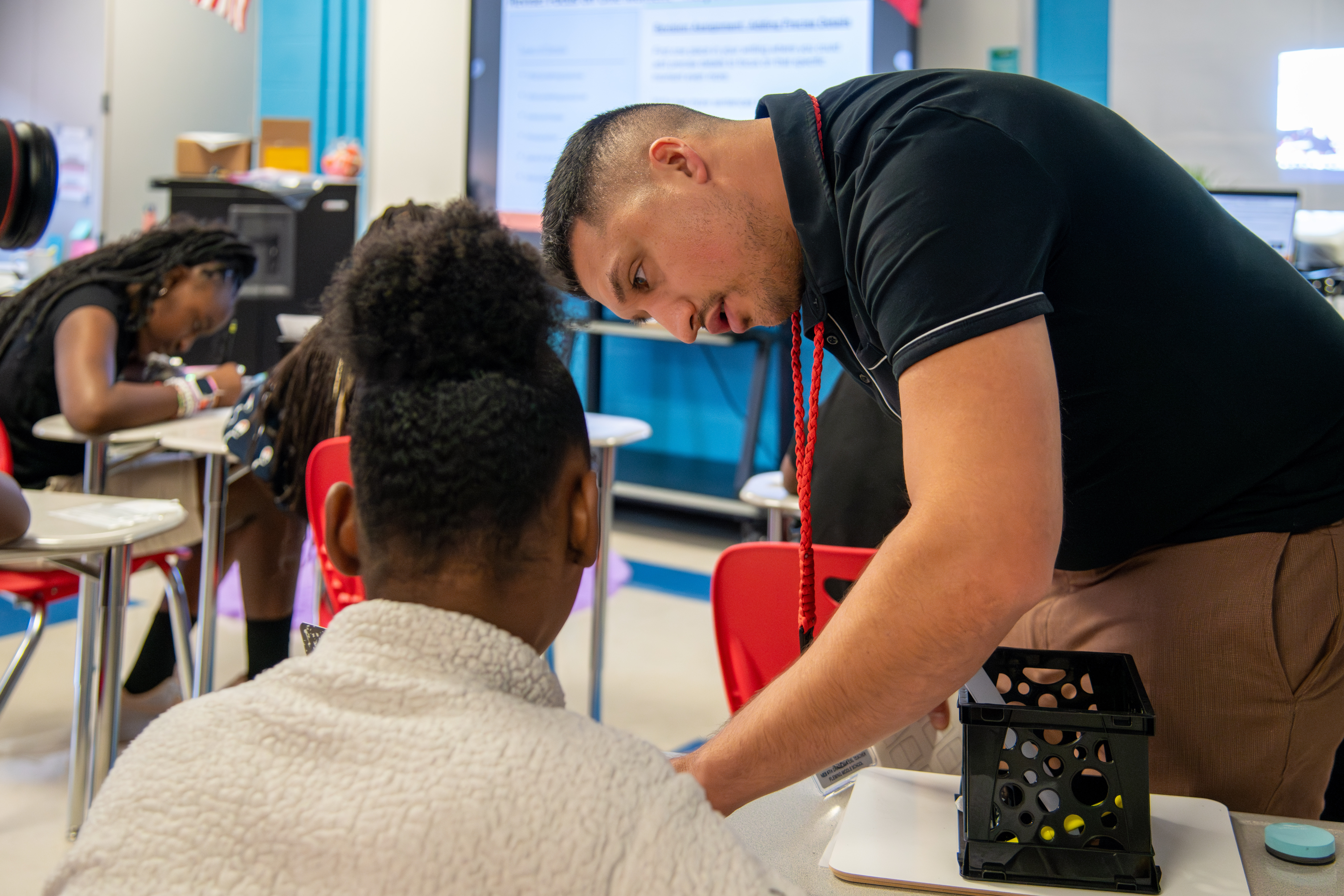 The student does not understand the objective. They are still a learner for today. They will need more help from the teacher to better grasp today’s lesson and will stay in the classroom with the teacher for the remainder of instruction.
The student does not understand the objective. They are still a learner for today. They will need more help from the teacher to better grasp today’s lesson and will stay in the classroom with the teacher for the remainder of instruction. -
S1 | SECURING
The student does not fully understand today’s objective but was close. They are still securing their learning and will need more help from the teacher to better grasp today’s lesson. They will stay in the room with the teacher for the remainder of instruction.
-
S2 | SECURED
The student fully understands today’s objective and has secured their learning today. They will pick up S2 assignments and go to the Team Center for the remainder of the instructional time to work independently or in a pair.
-
A | ACCELERATED
The student is working at an accelerated pace and has mastered today’s objective. They will pick up A assignments and go to the Team Center for the remainder of the instructional time to work independently or in a pair.
-
E | ENRICHED
The student is working beyond a standard accelerated pace. They may have the opportunity to work in the Team Center on special projects that involve a high level of creativity and critical thinking.
-
Student Experiences
-
Student Experiences
NES schools help students learn by building knowledge, perspective, and experience.
For HISD graduates to get good jobs in the future, they need to know how to think critically, solve problems, work in teams, evaluate and use information, and communicate effectively.
-
Dyad
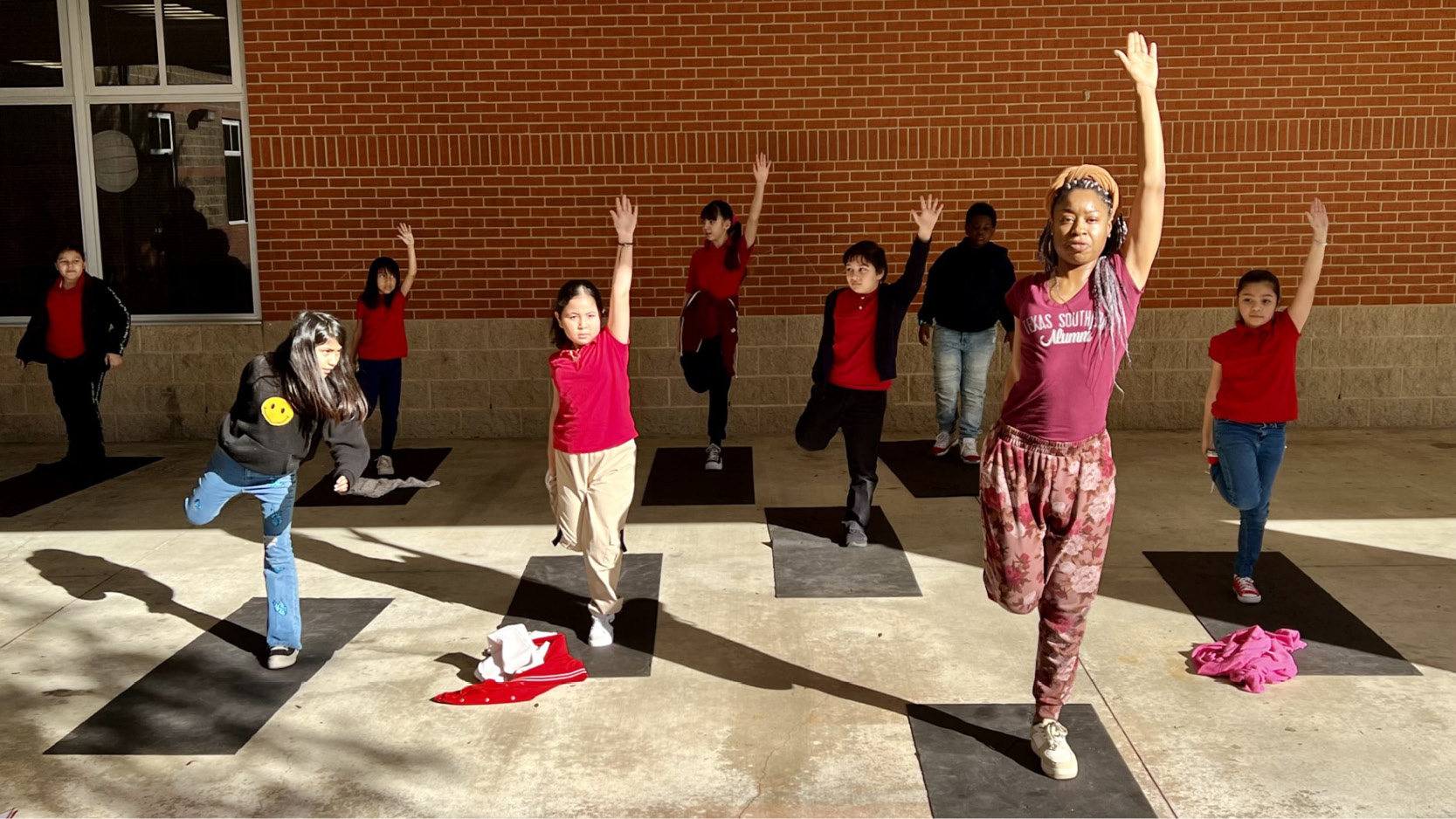
Students in grades three through eight take specialty Dyad classes in the areas of fitness, music and fine arts, 21st-century media and technology, and hands-on science. Classes supplement schools’ existing electives and magnet programs and are taught by community consultants with specific knowledge and skills. Through Dyad, students gain access to a variety of free, in-school enrichment opportunities they didn’t have before. They engage in experiential learning with their instructors and peers and explore ways to get involved in their community.
-
Art of Thinking
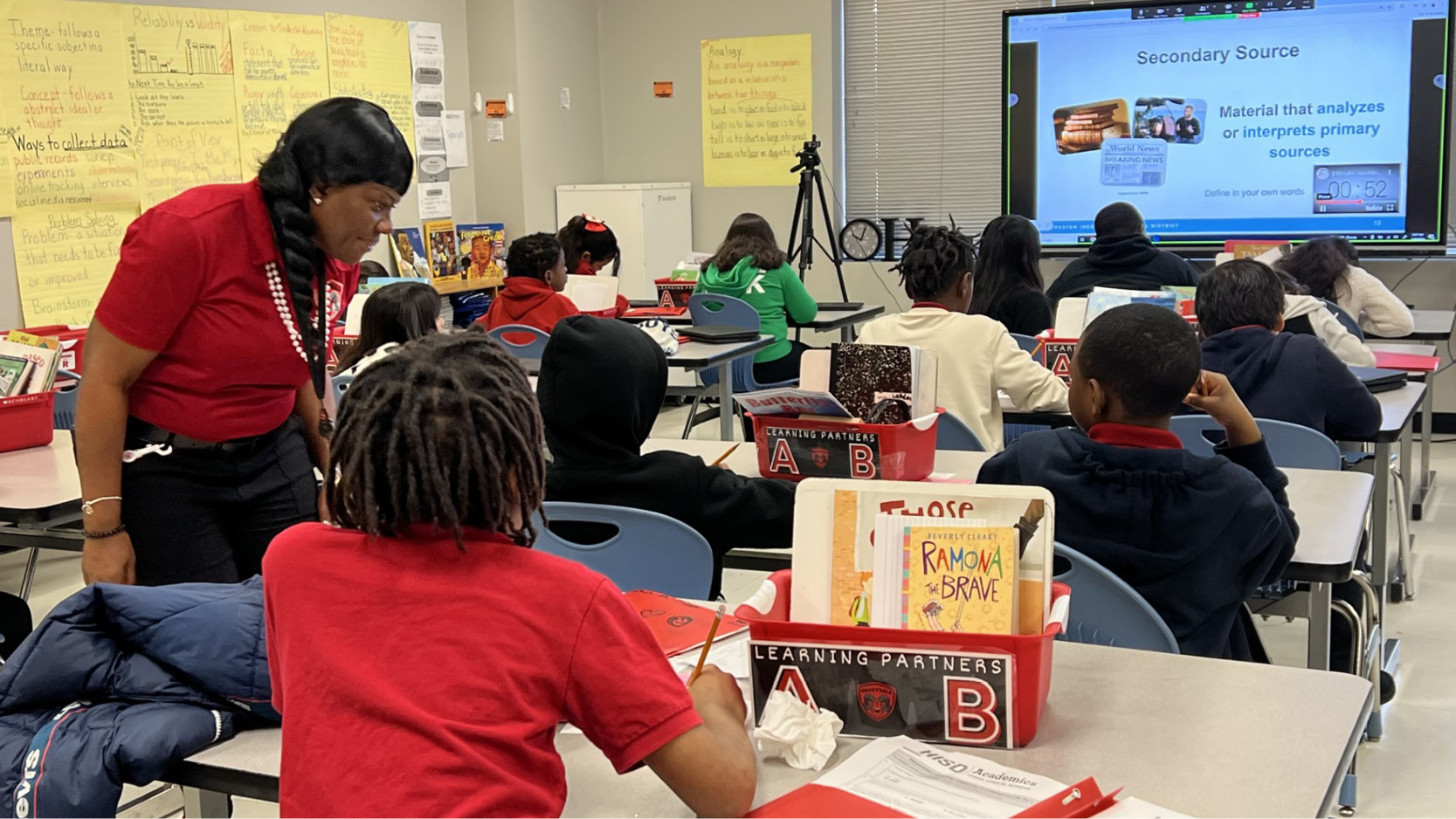
Students in grades three through 10 take Art of Thinking three times a week. The class is focused on teaching critical thinking and problem solving and how to assess, evaluate, and effectively use information. These are essential skills for students to process the large volume of information they receive through daily conversations, social media, and other digital channels.
In Art of Thinking, students learn about perspective, a view or attitude toward something. They are taught to be wary of information posted anonymously; why it is important to reserve judgment and question what is presented as fact; and how to look for primary sources, consider possible agendas, and identify bias.
Lessons also cover how to become a discerning user of data and facts. That is, how to consider sample size and how to recognize that data and facts can be "true" but can be used in ways to mislead and misinform—for example, when one data point or anecdote is accurate but should not be generalized to summarize an entire dataset or situation. Art of Thinking helps students understand how a person's point of view is influenced by experiences and the information to which they are exposed. Students also learn how broader perspective leads to better understanding and better decision making.
-
Student Travel


Eligible students get to travel and experience new places and cultures. In spring 2024—at no cost to their families—eligible seventh graders will travel to Washington, D.C., and eligible eighth graders will travel to Japan.
School staff provide intensive support throughout the entire planning process. They hold informational sessions for families, help students obtain their passports, and serve as chaperones on the trips. Leading up to the trips, campuses host fun events so students and their families get a sense of what the travelers will see and do.
Team Centers
-
Team Centers
Each NES school has Team Centers for the various grade levels.
Team Centers are open spaces that are used in different ways. The rooms have desks and chairs for students. When students show in the DOL, a mini quiz after the first half of class, that they are working at an accelerated or proficient level, they go to the Team Center to do more challenging assignments independently or in pairs. Learning coaches supervise the Team Center and guide students in their higher-level work.
There are a number of things students say they like about the Team Centers. For example, students who have strong command of the day's material are eager to show this, so they can move to the Team Center and on to other content. This approach helps students stay engaged and keeps them from becoming bored in school. Many students also like that the Team Centers are quiet, which allows them to concentrate.
School Culture
-
School Culture
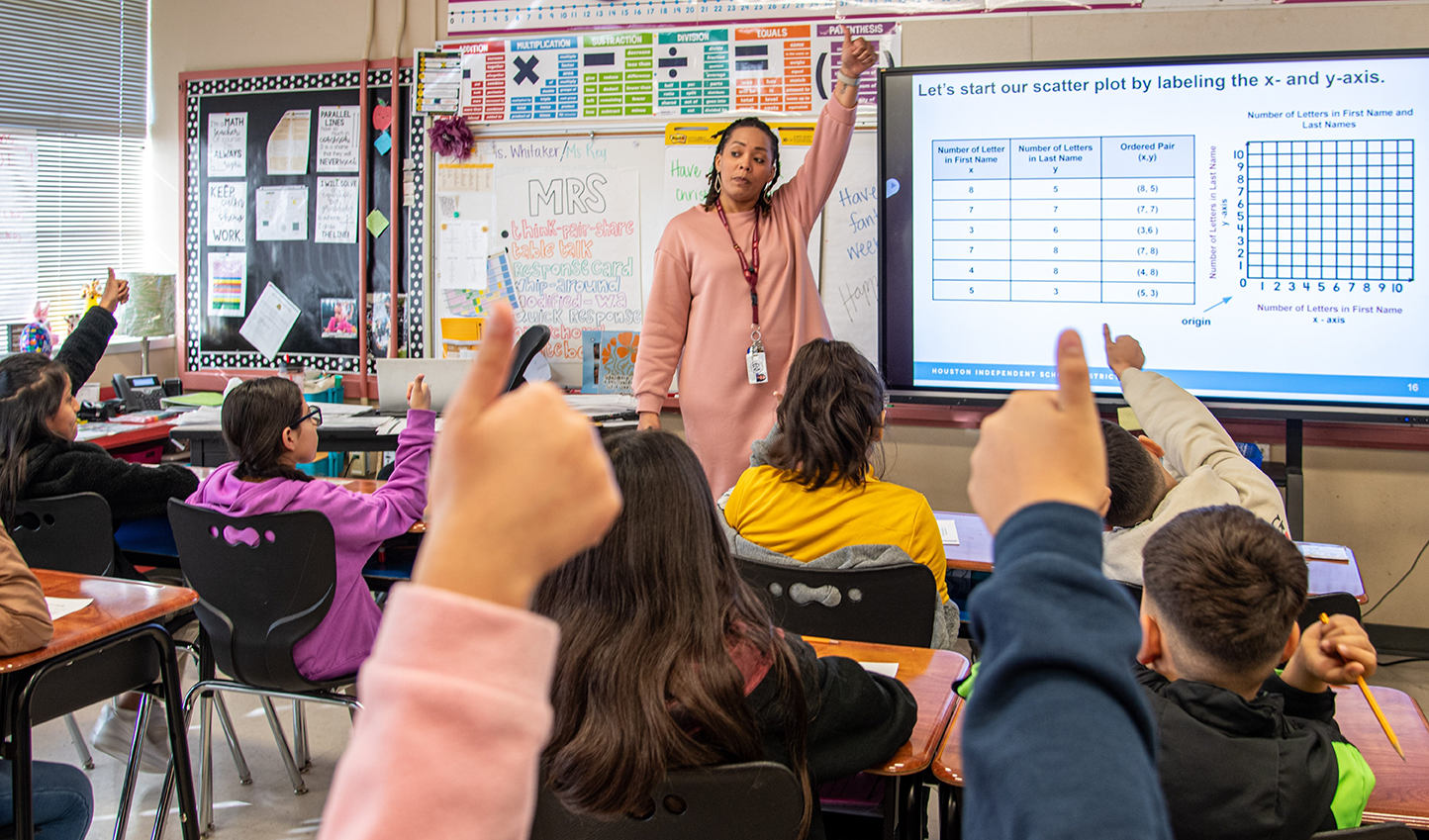
There are clear expectations for maintaining a culture of respect and a safe and productive learning environment.
Students must follow three overarching rules:
- Do not disrespect teachers or classmates,
- Do not disrupt the learning environment, and
- No bullying.
Discipline is handled by administrators so teachers do not have to step away from instruction. Students who are disruptive are sent out of the classroom to take a time out, get counseled, or access other services and support. Most students who are removed from class for minor infractions rejoin their class remotely via Zoom until the next class period.
Building Hours
-
Building Hours
To better support students and working families, NES campuses have extended hours.
All buildings open at 6:30 a.m.
- Elementary schools remain open until 5 p.m.
- The instructional day for students in Pre-K through second grade runs from 8 a.m. to 3:30 p.m.
- The instructional day for students in third through fifth grade runs from 8 a.m. to 4 p.m.
- Middle and high schools stay open until 5:30 p.m. The instructional day runs from 8:30 a.m. to 4:30 p.m.
- Elementary schools remain open until 5 p.m.

